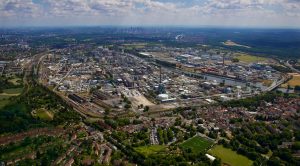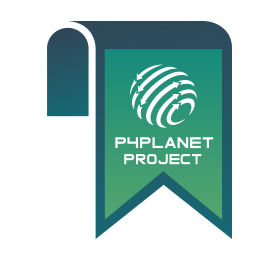We spoke to Prof. Hannes Utikal, one of the founding members of the H4C Community of Practice.
Could you tell us about the Process4Sustainability Cluster? What are your common goals?
Europe wants to become CO2 neutral – as early as possible, but by 2050 the latest. This goal requires a fundamental transformation of the economy and society. The process industry and its partners are crucial to the success of this transformation: together, we can develop new markets through innovative solutions, save energy and raw materials, replace fossil CO2 sources, and increasingly use CO2 as a resource as well.
The Process4Sustainability cluster is a network of companies in the process industry, research institutions and social innovation partners, situated at the Industriepark Höchst. We aim to proactively shape the transformation process towards climate neutrality by identifying concrete measures for individual companies and their specific local conditions.
We do so by offering companies practical knowledge about the levers of CO2 neutrality, new markets, and innovative business models. We create future markets by connecting the demand side with solution providers. We see ourselves as a partner for business, science, politics, and society on the road to climate neutrality and are supported by the Hessian state government.
At the park, energy and waste streams are jointly used or produced by the companies at the site. The central organization of the energy, water and raw materials supply and disposal by Infraserv Höchst allows for an efficient use of resources and energy. By using synergies in this way, both costs and carbon emission reductions can be achieved. However, further reduction potentials need to be tapped in the coming years to reach climate neutrality. The partners will jointly tackle this challenge within the cluster.
Can you tell us a bit more about how you work together towards these goals in the cluster?
An economically viable transformation is achieved through coordinated actions within the park. Within the cluster, Process4Sustainability has developed a roadmap for this transformation. Starting with an assessment of the “business-as-usual” (BAU) concept – which meets its heating and electricity needs primarily using fossil fuel – and the calculation of its associated carbon footprint, three future technology paths were developed. Based on these scenarios, specific technology options, including their implications regarding costs and carbon reductions were reflected upon within the cluster and roles for the implementation assigned amongst the companies. These steps are now being followed up through deep dives and joint sensemaking workshops. These are held to exchange views on new technologies, as well as different working groups and expert conferences.
Can you name one or two concrete examples of successful Industrial (Urban) Symbiosis collaborations?
At the Industriepark Höchst site, INERATEC is building a power-to-liquid plant to produce synthetic, climate friendly e-fuels. The plant uses up to 8,000 metric tons of CO2 from a biogas plant as feedstock. To date, it will be the biggest power-to-liquid plant for the production of synthetic fuels and chemicals from biogenic CO2 and green hydrogen in Europe.
Furthermore, the world’s largest hydrogen train fleet is being developed for the Taunus network in Hesse, Germany. The trains are fuelled up with hydrogen which arises as a by-product at the Industriepark. The trains are a milestone in sustainable mobility – they constitute a climate-friendly alternative for all those routes on which electrification via overhead lines is not an option.

Industriepark Höchst – Aerial photograph. https://www.infraserv.com/en/news/presse/press-images/ © 2021 Infraserv GmbH & Co. Höchst KG
We are keen to be part of a network of sustainable industry parks in order to be able to exchange on best practices and practical challenges. Our ideas on how to achieve climate neutrality in an industrial park setting can be replicated and rolled out globally. In this way, we can make a positive impact beyond our region. We would like to exchange ideas with others aiming to implement similar solutions worldwide, so we can learn from each other and establish best practices.
To be more specific, we are happy to discuss the method we have developed for a coordinated implementation of the technology shift required to achieve carbon neutrality within the industry park with other members of the H4C Community of Practice. The following article provides an overview of our practical step-by-step approach developed to tackle the transition. In the article, we explain how the roadmap was developed and share our practical experience of the lessons learned during the implementation of our method. At the same time, we are keen to receive feedback to learn how others approach the transformation on their end.
Source of the photo of Prof. Hannes Utikal: Provadis School of International Management and Technology AG


